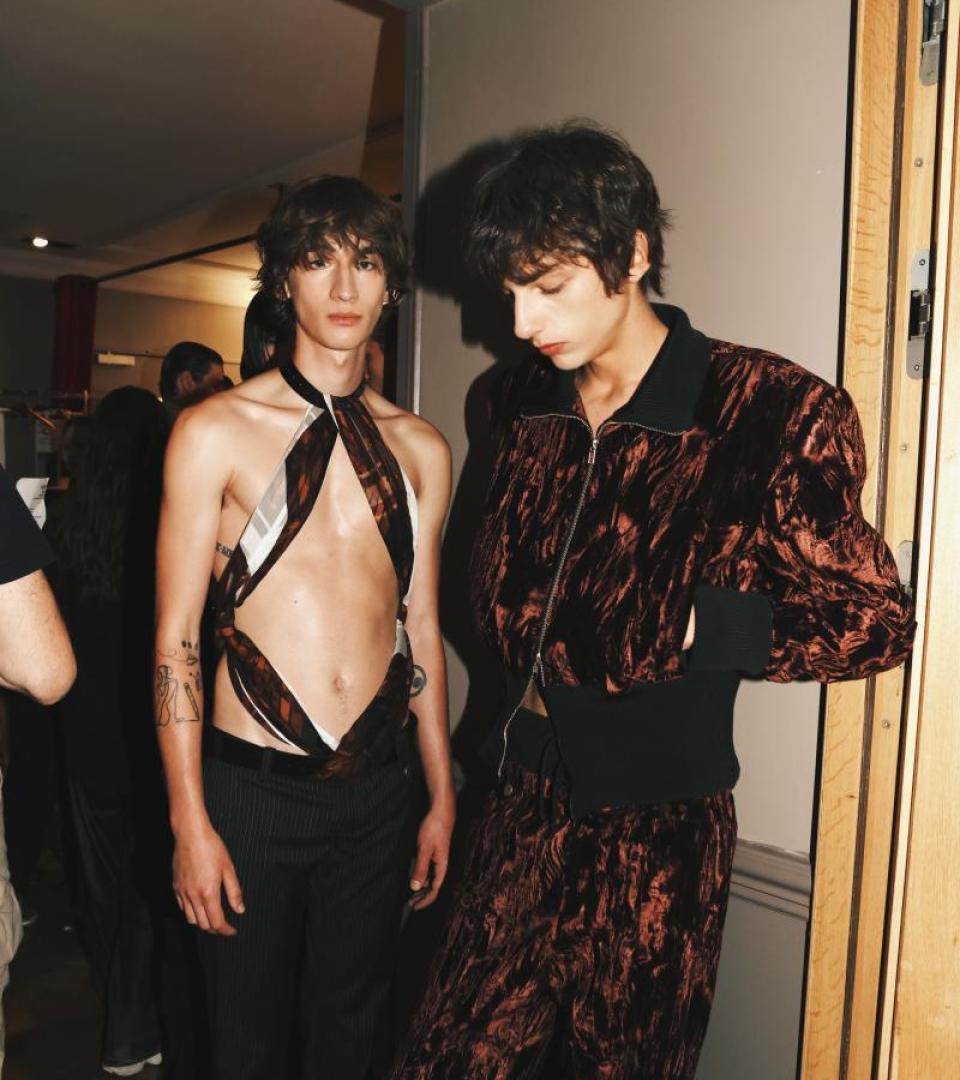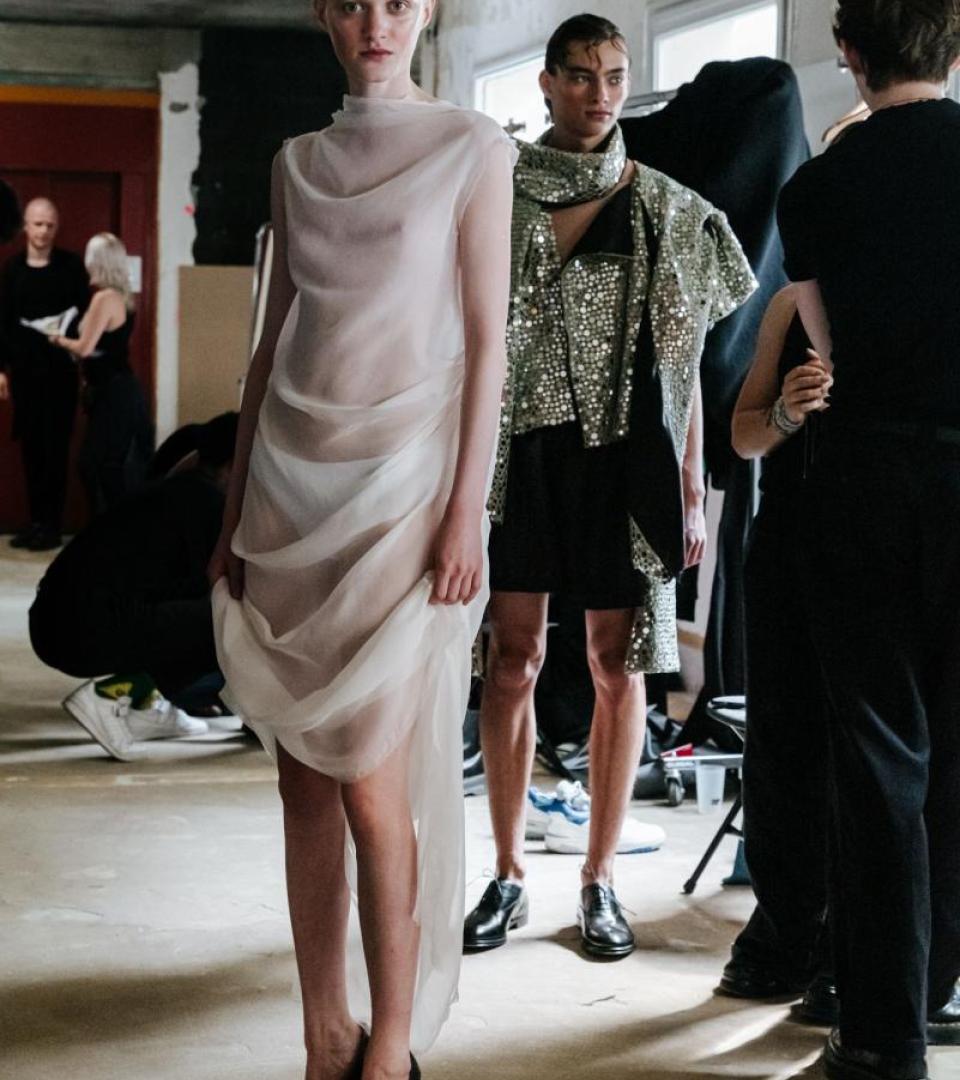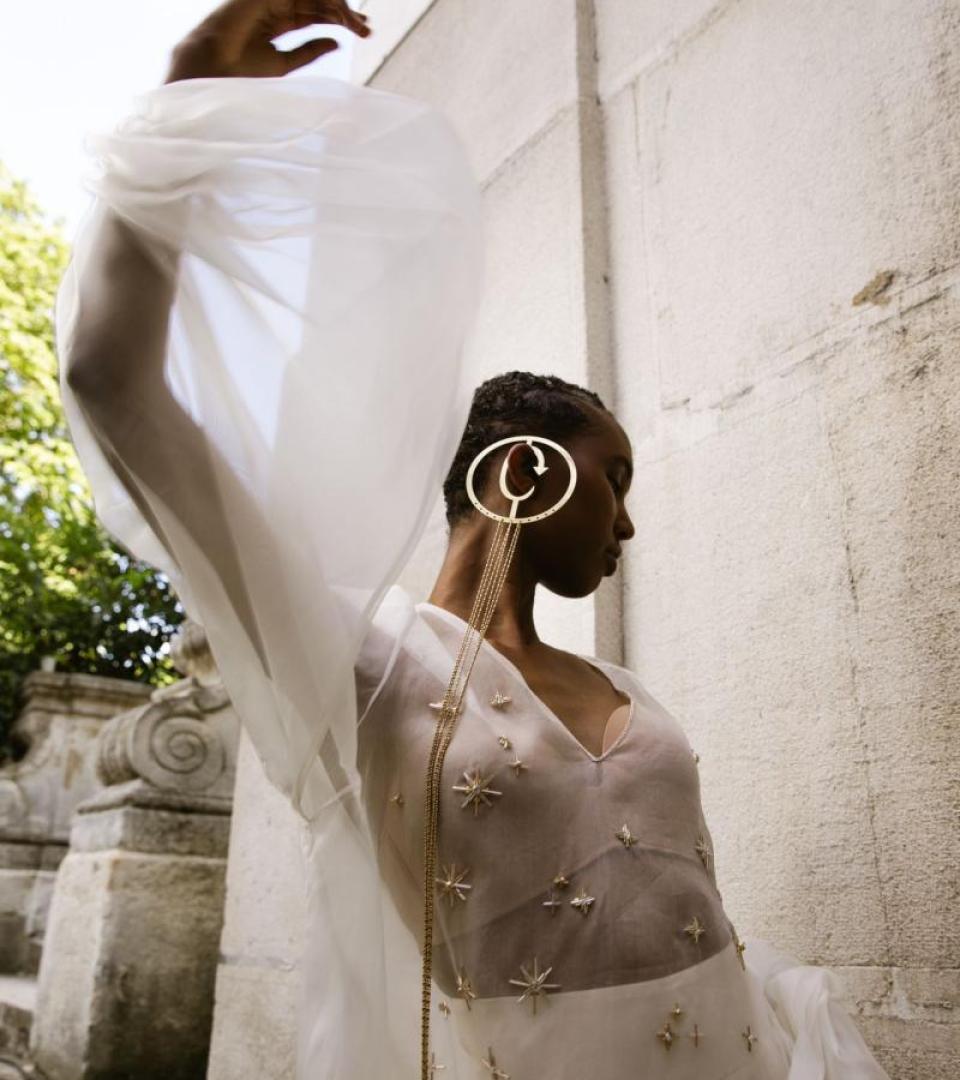ArdAzAei Applies Physics to Couture
By Paul McLauchlan
At the Musée des Arts Décoratifs, ArdAzAei’s Bahareh Ardakani presented, ‘Calabi-Yau: The Hidden Dimensions.’ Her Fall/Winter 2024-2025 collection draws its title from a theory in spatial geometry that references parts possibly not yet discovered by superstring theory, another theoretical framework. The Swedish-Iranian Haute Couture and Ready-to-Wear designer reasoned that in Haute Couture, like in spatial geometry, silhouettes and shapes can surprise and circumvent expectations in how they are constructed and manipulated materials.
In addition to her interest in science (past collections have looked at nature and luminescence), for her first show on the Official Calendar, Ardakani summarizes some of her signatures. There’s her affinity for sculptural design in a long sculptural dress embellished with intricate hand embroidery by Lesage referencing Calabi-Yau forms. There’s her interest in gemology, which she studied in Antwerp after obtaining a degree in Mathematics and Design Engineering, which is expressed through glass bead and sequin embroidery. There’s also her eco-conscious approach; see the GOTS-certified dress in silk faille and printed silk satin blossoms cut as half flowers and half Calabi-Yau manifolds. Speaking of, Fall-Winter 2024’s Ready-to-Wear collection was fully GOTS-certified. And to think Ardakani is only getting started.
“Haute Couture is a lifelong education. I will never finish being good at this. There will always be levels to explore, and things that I have to learn. There will always be more to look into and understand,” said Ardakani from her atelier located in the centre of Paris on rue Saint-Florentin.
What would you like us to know about this collection?
This is a deep dive into my fascination for string theory and mathematics. It explores the idea that the universe exists in more dimensions than humans can see. Through the years, physicists and mathematicians have been studying the variation of dimensions that exist that the human eye can see. One illustration of this is the Calabi-Yau manifold. I wanted to translate this idea of shape into the collection. I’m playing with ideas of sculpture shaped by different Haute Couture techniques and savoir-faire that manipulate fabrics into new shapes. You have silhouettes that are very detailed but are presented as abstract shapes. It’s looking at how silhouettes can be interesting in every sense, that in every kind of view you have of the garment there is some movement or light diffraction. What’s been most interesting with this collection is the construction behind the mathematics and calculations that we completed to be precise with how we’ve built the silhouettes and shapes.
Where do you look for inspiration?
When I started, it was geology and gemstones, which became an endless source of inspiration — and it still is for this collection because they capture beauty beyond time, beyond everything that stresses us. I realized that you needed the right ingredients to make something sublime so the gemstones became one part of it because you have this amount of time captured on the inside and a radiance on the outside that creates beauty.
From there, I thought about how I connect this to myself. I have my Persian side — I was born in Tehran, Iran. I grew up in Sweden, where they have views about technology and sustainability. There, there is also a modern and minimalistic approach to design, which is in contrast to the Persian side that is more extravagant, rich, and detailed. To combine these elements and to make it a reality, I needed French savoir-faire and craftsmanship.
How important is Haute Couture in 2024?
Haute Couture is like a language that you have to learn through life. It’s a lifetime education. I will never finish being good at this. There will always be levels to explore, and things I must learn. There will always be more to look into and understand. This level of craftsmanship allows you to know what you’re doing because you start questioning why things are made in a certain way. The care that is a central part of creating couture is important for people to realise; that there must be a sincere vision and passion for something like this.
How does it feel to be presenting on the Official Calendar for the first time?
It’s a dream come true. It gives me the strength to continue with the vision that I have. It’s a very important milestone that motivates me to move towards the future.
What are your hopes for your brand in the years to come?
When I started, it was just me in a small room in my apartment, sketching with the idea of creating a Fashion House with the ambition of questioning things in the process. I had to figure out how to find the right suppliers to make fabrics, how to produce garments from scratch, and how to dig into the finer details of having a Haute Couture and Ready-to-Wear business. It’s wonderful to have amazing craftsmanship and work with heritage companies but, at the same time, I’m very keen on how to maintain an eco-friendly approach. Today, we’re a GOTS-certified brand and I want to continue to create organic luxury that doesn’t compromise on design.
This interview has been lightly edited.



